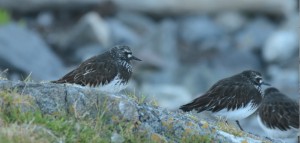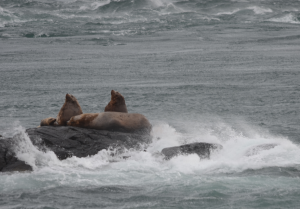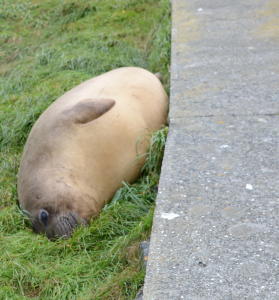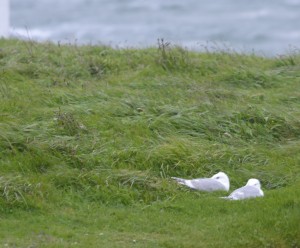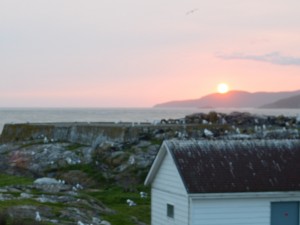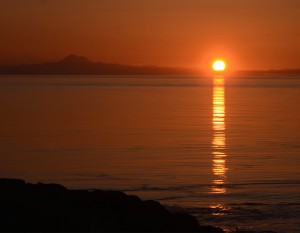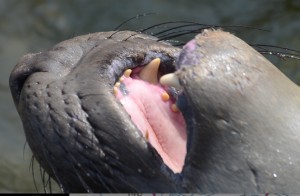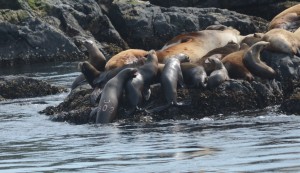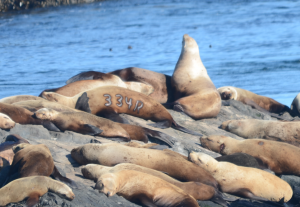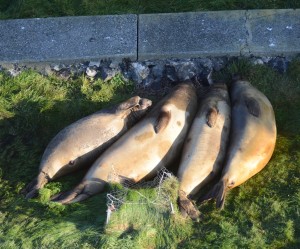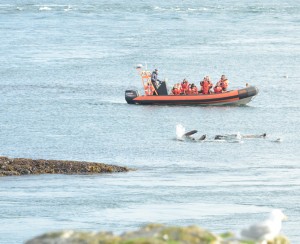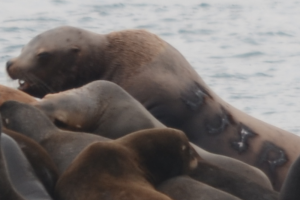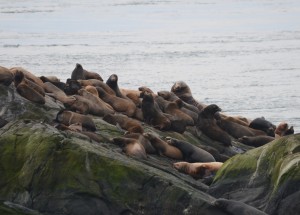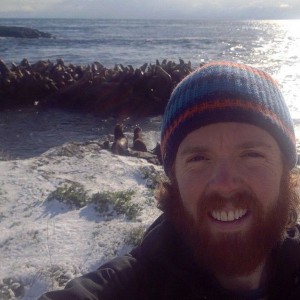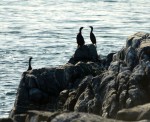Winds started out very light from a northerly direction and eventually backed all the way through east, southeast and around to westerlies, 15 to 20 knots and gusting, in the afternoon. Although there were some clouds and showers it seemed to be a nice day, but when you look at cumulative solar radiation values they were less than half of yesterday’s values at just below 300 Langleys. The barometer fell gradually all day and levelled out near dusk ending up at ~100.5 HPa. The strong wind warning remains in effect and is forecast to be strongest in the afternoons for the next few days.
Whale watching boats were back today after the storm subsided and four were observed in the Ecological Reserve. They were meeting and exceeding the Marine Mammal Regulations and although a couple of the smaller cowboys did manage to get between Great Race and South Islands. They were going so slowly and cautiously that the sealions that didn’t even wake up as the boats passed by.
No sports fishers or other vessels were observed in the ER.
One branded Steller’s Sealion was noted hauled out on the South Islands. This female with brand # 120Y was born at St. George Reef, California in 2002.
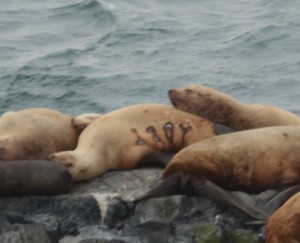
Female Steller’s (or Northern) Sealion # 120Y. This animal was born in northern California and will be 13 years old this summer.
Today was animal census day and the results are as follows:
Northern Elephant Seals 34 (8 on Great Race)
Harbour Seals 44 (note 137 counted following day, less windy)
California Sea lions 11
Northern Sea lions 38
Sea Otter 1
Canada Geese 18
Harlequin Ducks 4
Pelagic Cormorants 4
Double Crested Cormorants 5
Bald Eagle 2 adults, 2 sub-adults
Killdeer 1
Black Oystercatchers 10
Black Turnstones 15
Surfbird 23
Dunlin 4
Pigeon Guillemots 383
Glaucous-winged Gulls 488 adults 18 sub-adults
Caspian Tern 1 (flying through)
Common Raven 1
Barn Swallows 2
Savannah Sparrow 6
There were no visitors today. Chores were routine.

